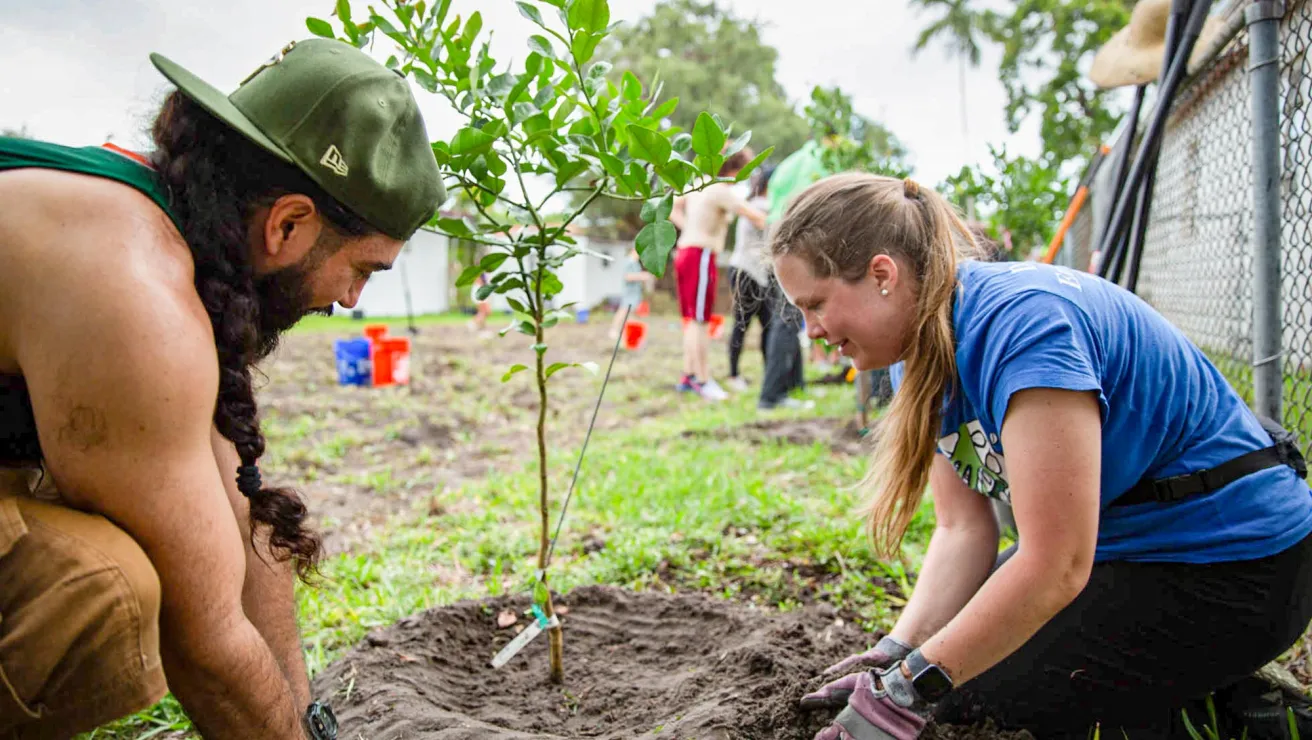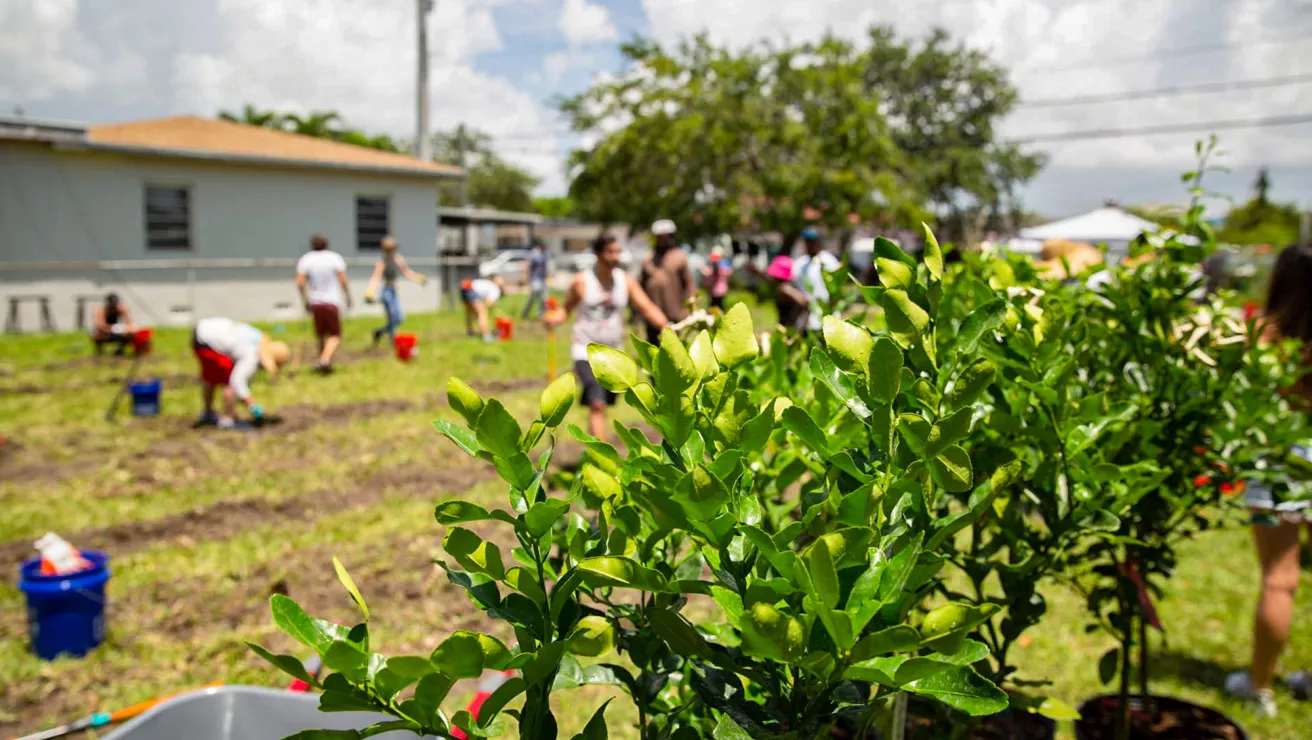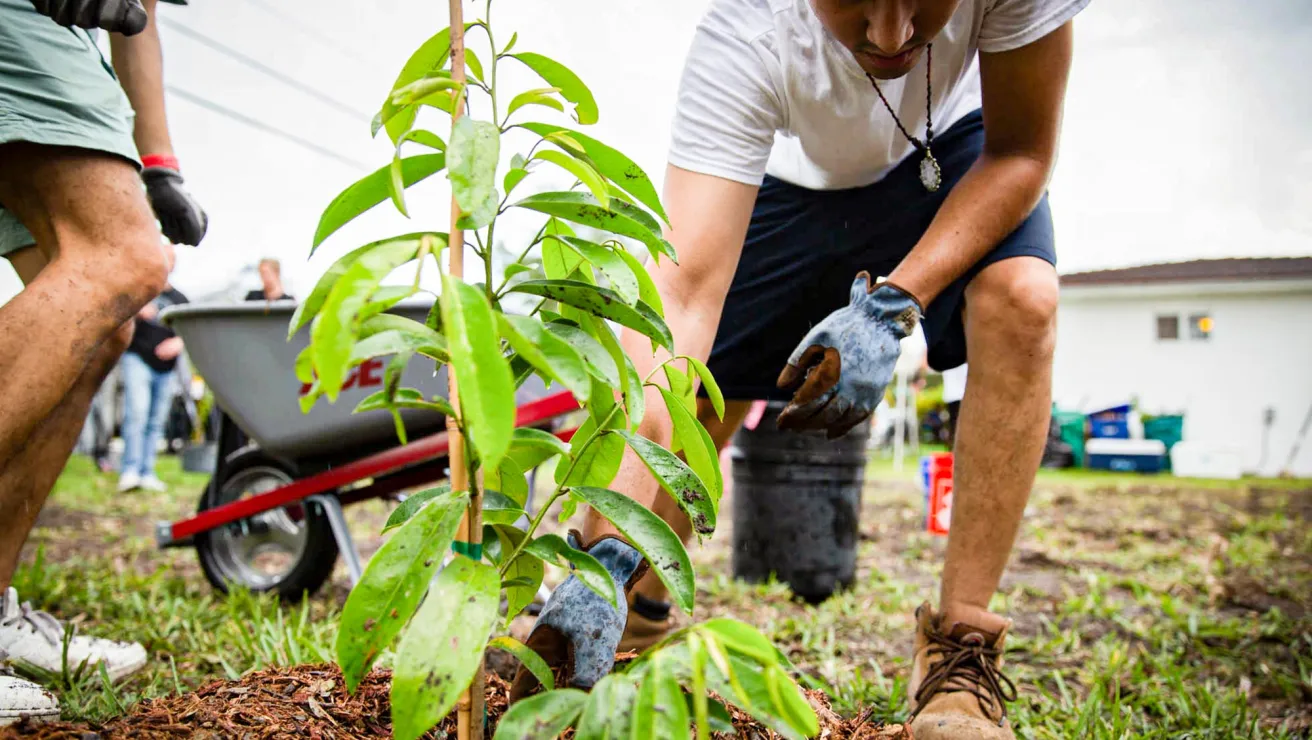Now live: The 2025 Canopy Report. Learn how Americans see trees. GET THE REPORT
A Tree Can Be Empowering
Planting fruit trees to nourish the residents of Brownsville.
August 9, 2023
When you think of Miami, you might envision a vibrant city full of energy, culture, and incredible cuisine.
You might see it as a playground for the wealthy and well-known. Yet within its alluring sights and sounds is a neighborhood plagued by food insecurity.
Meet Brownsville, an urban residential setting that's home to approximately 17,000 residents, most of whom live with food insecurity on a daily basis. Why? It comes down to socio-economic class—the average household income in Brownsville is almost 30% below the poverty line, hence the lack of grocery stores that would otherwise nourish its black and Hispanic population.
Brownsville is what is known as a food desert. Food deserts are areas in urban and rural settings that lack traditional supermarkets—in other words, processed food wastelands. Nearly 24 million Americans live in areas with limited or no access to grocery stores that offer fresh produce.
Like so many food deserts, Brownsville was left with little hope.
Until the community came together and grew it.
A Tree Can Be Life-Changing
One way to battle food insecurity is by creating green spaces where people can come together and grow their own food. When a neighborhood plants fruit trees, its efforts are rewarded with sweet, satisfying fare and much-needed shade. From a single seed, families can ease their hunger, connect to the land, and nurture relationships.
This approach to combating food insecurity was brought to life in Brownsville.
The Brownsville Community Garden project came about from a desire to empower residents through urban farming. Dr. Enid Pinkney, a local legend and community activist, donated a quarter-acre lot behind her home to be turned into a place of security and belonging. “I am very happy that people have come to work on the land,” said Dr. Pinkney. “This is a teaching experience; it’s a learning experience; it’s a building history experience.”
The planting efforts were orchestrated by two south Florida non-profits, Citizens for a Better South Florida and Green Haven Project, who work to bring equity and dignity to low-income, underserved neighborhoods through hands-on environmental experiences. That day, volunteers planted 45 fruit trees and a variety of vegetables.
It Takes a Purposeful Village
From planning, to funding, to digging up soil and planting trees, the Brownsville Community Garden was brought to life through the commitment of local organizations, generous volunteers, and engaged residents.
“We make sure we collaborate with as many partners as possible for our projects,” said Britany Ziems, Executive Director, Citizens for a Better South Florida. “At the end of the day, if we’re all working for the same goal, it’s important we work together to make that goal even more impactful.”

One of those partners is the Arbor Day Foundation, which provides the necessary means to turn vision into reality. The Arbor Day Foundation connects support from its members and works with local organizations around the world to plant trees in neighborhoods where they are needed most—like Brownsville.
The Brownsville Community Garden has brought neighbors together. They work the land, kneeling side by side, hands in the dirt, sharing cultures, experiences, and soon, food. Gone is a bit of the insecurity; a bit of the uncertainty; a bit of the injustice.
“We’re going to do this together, as a collective, black, white, Hispanic,” said David Roper, Green Haven Project.





